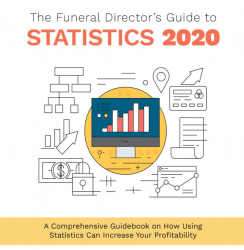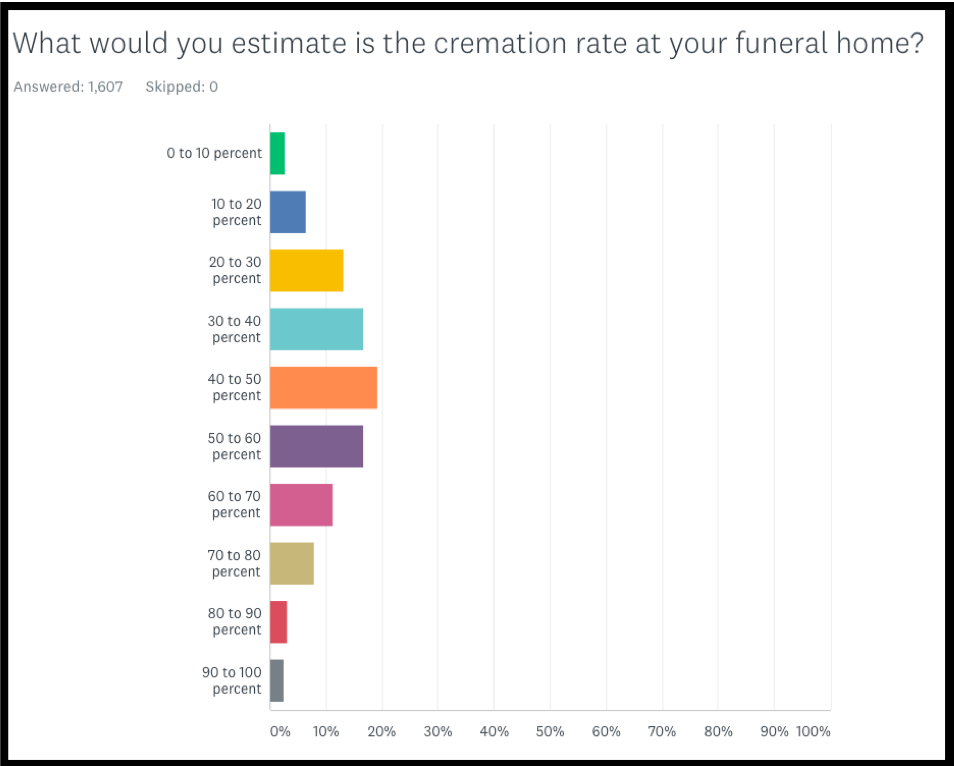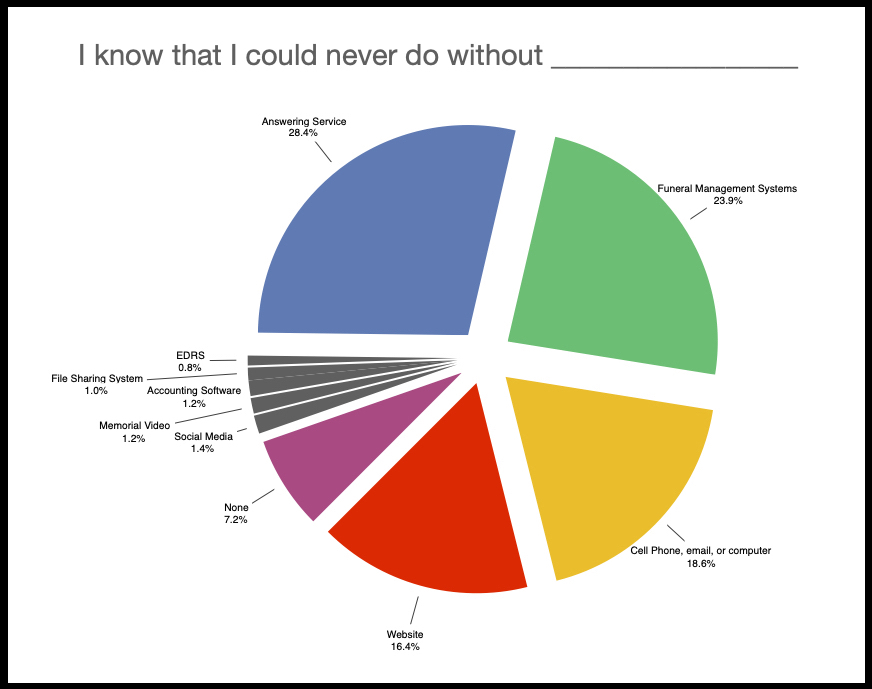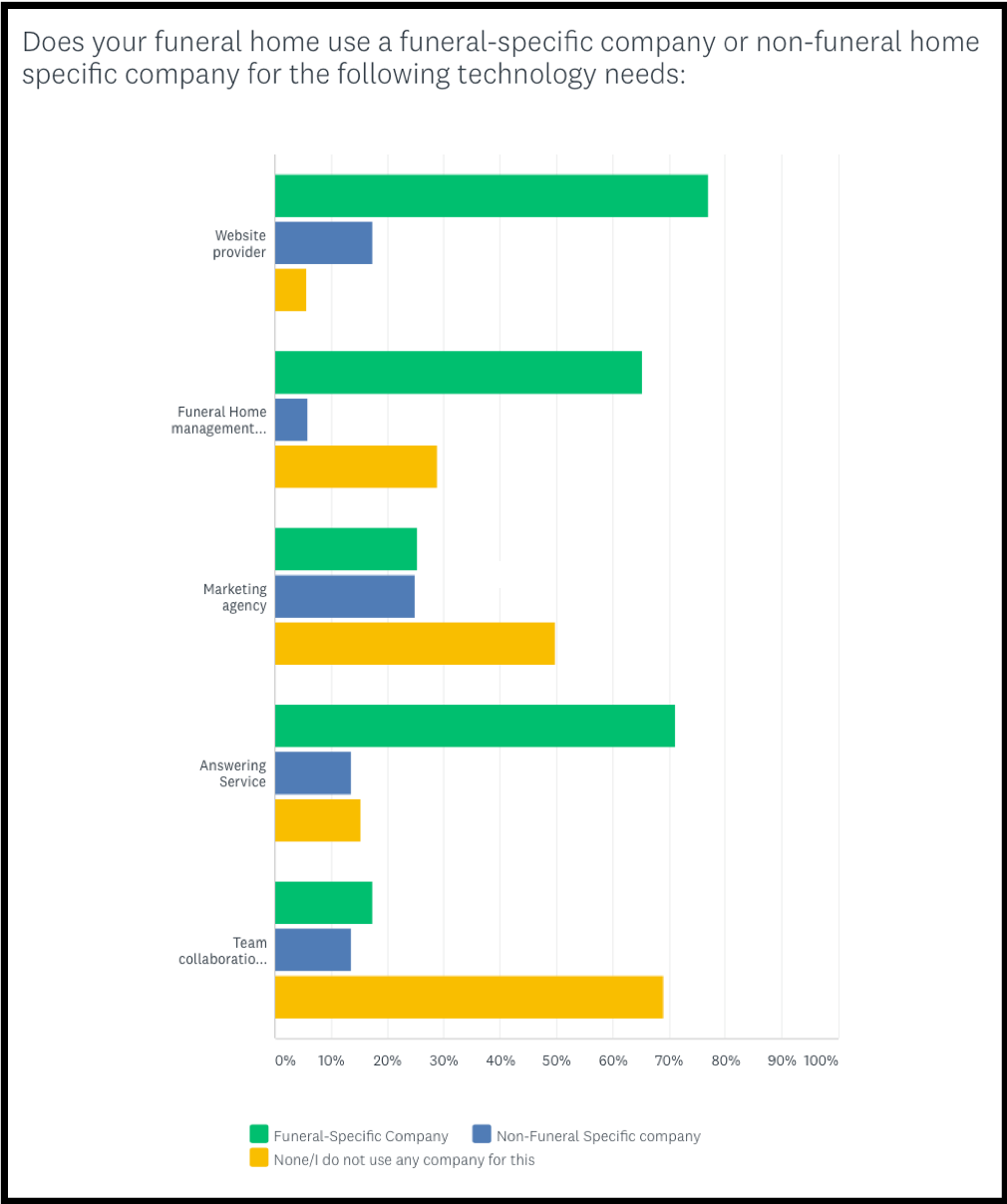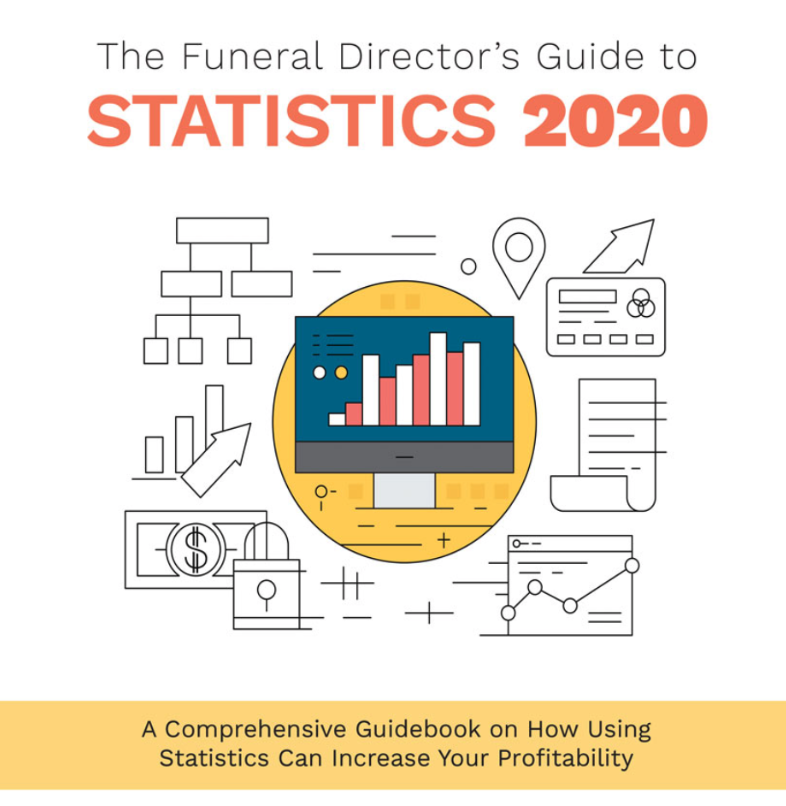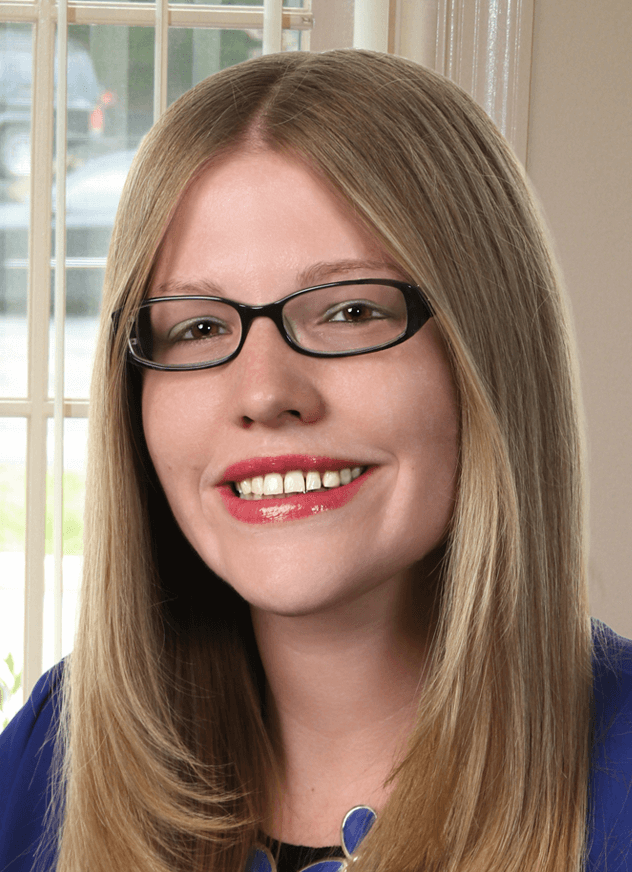May 28, 2020
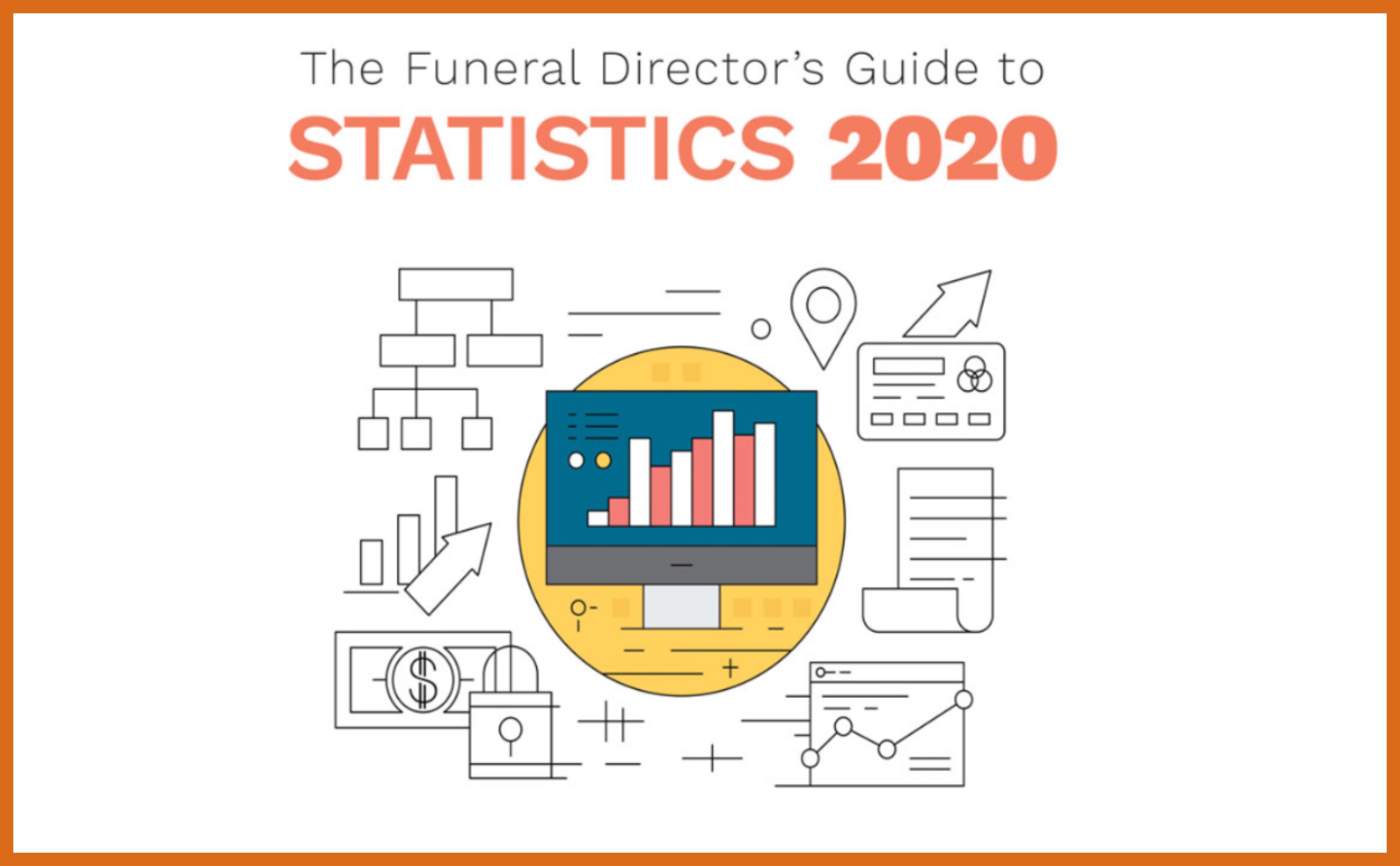
ASD National Sales Manager, Craig Meehan, was recently published in Kates Boylston Publications’ Funeral Director’s Guide to Statistics (2020 issue). In the article, Craig unpacks the results of a survey distributed to more than 1,600 funeral professionals to assess their use of different technology solutions. The article, A 2020 View of Funeral Home Technology, explores the overall attitudes and opinions morticians have about their funeral home’s use of technology. The survey was sent out several months before the emergence of COVID-19. Since many funeral homes have been forced to adapt to new technology in light of the pandemic, these survey results are particularly illuminating.
For more of the latest funeral home statistics and trends, we highly recommend reading the Funeral Directors Guide to Statistics in its entirety. The latest edition features the most up-to-date statistical information in the funeral profession and provides readers with knowledge to better understand buying trends, what services families want most and more. You’ll find a wide range of articles that cover topics such as cremation trends, the usage of telecommunications, website traffic, preplanning, mortuary college statistics and much more. Click here to learn more or to order your copy.
A 2020 View of Funeral Home Technology
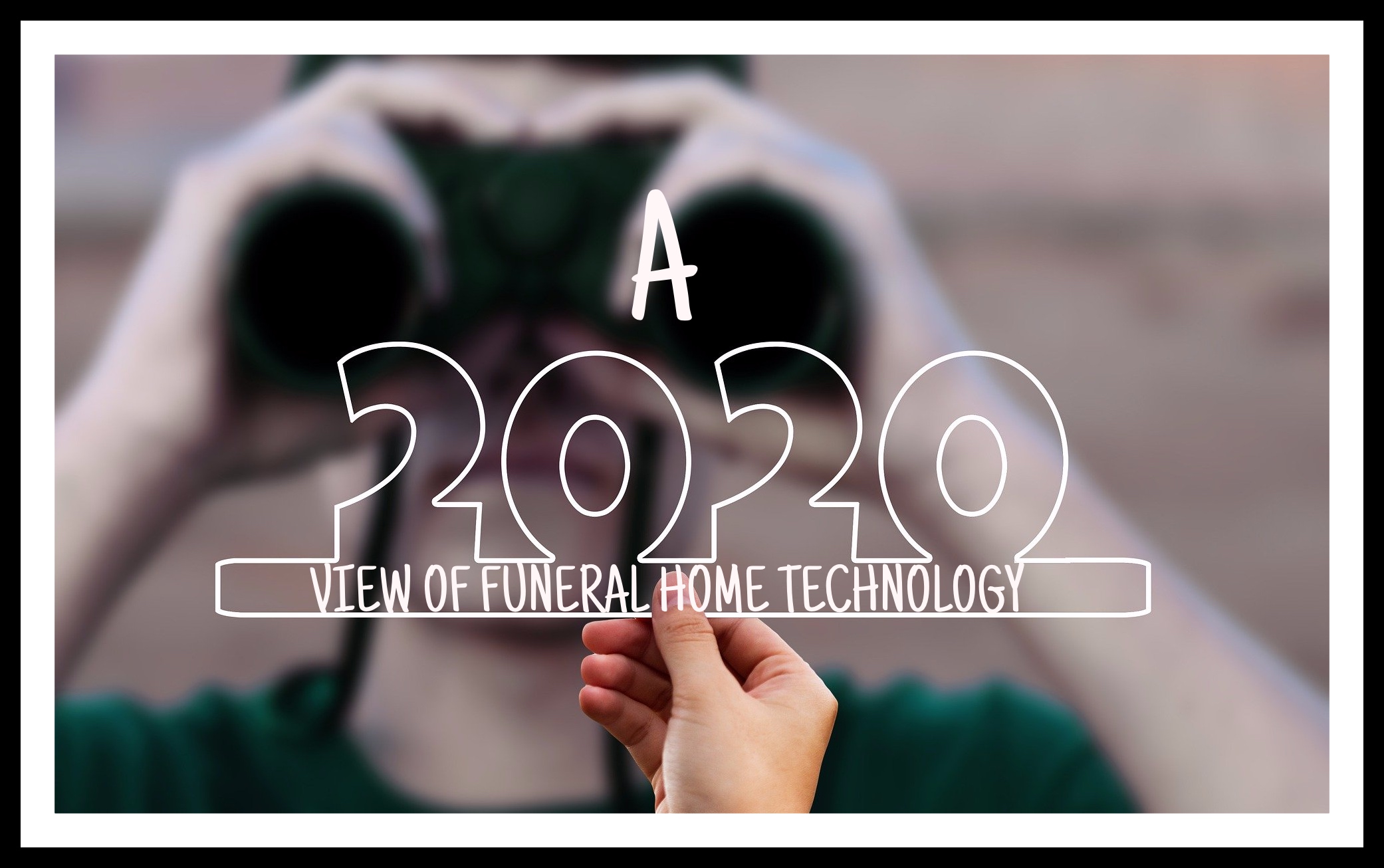
Funeral professionals understand the vital importance of making connections and building relationships. As the rest of the world becomes more automated, those that work in this sensitive profession are often confronted with an onslaught of distractions that threaten to take their focus away from the people who need their attention. Technology can never replace the human connections that are the hallmark of this profession, but it can streamline or even eliminate the tasks that often take funeral directors away from the people they would rather be serving. Due to the impersonal nature of technology, there is a perception that morticians are unwilling or disinclined to try new technical solutions. Are funeral professionals really slow to adapt, or is the technology offered to them simply not fulfilling their needs?
This survey examines the role of technology in the funeral home business. The survey was sent out to 32,000 funeral professionals and had a 5 percent response rate. Overall, more than 1,600 funeral professionals responded to the survey. Participants were asked to answer questions pertaining to their usage of different technology solutions, mobile apps, management systems and scheduling tools. The survey also explores the overall attitudes and opinions morticians have about their funeral home’s use of technology. In addition, participants were asked to share details about their technology goals and challenges as well as provide specific recommendations on different solutions that have helped their firm.

The non-branded, anonymous survey was sent out on behalf of Kates Boylston Publications. The survey was conducted by ASD – Answering Service for Directors, the leading funeral home exclusive answering service, and was sent by means of a questionnaire using the Internet survey tool Survey Monkey. In an effort to construct a thorough analysis of the marketing and communication behaviors of morticians, ASD polled both its current client base as well as funeral professionals who do not use the company’s services.
About Survey Participants
Current Position
The survey drew responses from 1,607 funeral professionals: About 37 percent (597) were full-time licensed funeral directors, 20 percent (322) were sole owners, 18 percent (290) were co-owners, 6 percent were general or location managers (97), 4 percent (68) were apprentices or interns, 3 percent were part-time licensed funeral directors (49), 3 percent were family service counselors or arrangers (47), 2 percent were support assistants, receptionists or office administrators (32), and 2 percent were funeral attendants (29). About 5 percent (76) selected ‘other’ and listed a different position such as crematory operator, coroner or retired funeral professional.
Location
The survey was sent out to funeral homes located in all 50 states. About 47 percent (763) of the funeral professionals polled serve families in a suburban area, 35 percent (560) serve families in a rural area, and 18 percent (284) serve families in an urban area.
First Calls Handled Per Year
About 80 percent of funeral professionals surveyed handle more than 100 cases per year. More than a third (35 percent) handle over 300 cases a year. Below is a breakdown of this data.
|
First Calls |
% of Respondents |
Number of |
|
0-50 |
6 percent |
98 |
|
50-100 |
15 percent |
235 |
|
100-299 |
44 percent |
707 |
|
300-499 |
17 percent |
281 |
|
More than 500 |
18 percent |
286 |
Cremation Rate
More than 60 percent of the funeral professionals polled (978) have a cremation rate over 40 percent. Below is a full breakdown of this data.
Technology Goals and Objectives
Funeral professionals were asked what technology goal was the most important for their funeral home. Below is a breakdown of the answers listed in order of most to least important by survey participants
- 22%: Increased productivity for our funeral home team
- 20%: Finding solutions that simplify my life
- 19%: Integration between all of our technology partners
- 16%: Finding tools that help me remain connected with my families
- 8%: Better visibility for my business online
- 7%: An improved or enhanced social media presence
- 5%: Finding technology solutions that allow me to work away from the office
- About 3% selected ‘other’ and wrote in responses. Some of the most common write-in responses included, ‘technology that will help grow my business’ and ‘finding technology that is easy to implement and user-friendly.’
Survey participants were asked what their most important objective is when evaluating if technology solution is a good fit for their funeral home. Below is a breakdown of their responses.
- 38%: Will this solution improve the experience of families I am serving?
- 35%: Will this solution save me time and increase my team’s productivity?
- 17%: Will this solution integrate with my current technology systems?
- 8%: Will this solution increase my office mobility?
- About 2% selected ‘other’ and wrote in responses. Some of the most common write-in responses included, “will this solution increase market share?”, “will this solution save me money” and “will this solution be easy for non-tech people?”

This data reveals that, by and large, the most crucial goal funeral professionals have when evaluating technical solutions is the element of saved time. The top three goals: ‘increased productivity’, ‘solutions that simplify my life’ and ‘integration between technology partners’ all involve accomplishing tasks with less time and effort. Saved time was also the #2 ranked objective funeral directors have when evaluating if a technology solution is a good fit for their funeral home. The #1 objective, ‘will this solution improve the experience of the families I am serving?’ is also directly tied to the goal of saving time. When funeral directors spend less time on data entry and office tasks, they have more time to devote to the families they are serving which in turn improves the family’s experience.
Technology Business Purposes
The survey asked funeral professionals to indicate how their funeral home uses technology for business purposes. Below is a breakdown of the most common funeral home business uses of technology.
- 77% use technology for website management
- 69% use technology for answering service tracking
- 41% use technology to manage their funeral home cases
- 23% use technology manage the funeral home inventory and accounting
- 21% use technology to create or complete forms
- 19% use technology for scheduling and managing the funeral home calendar
- 17% use technology to collaborate with families on services
- 11% use technology to manage funeral home tasks
- 10% use technology for live streaming funeral services
- 9% use technology to collaborate with their team on projects
- About 3% of respondents selected ‘other’ and listed other business tasks they accomplish with technology such as memorial tribute videos, guest registry systems and communicate with their county coroner.

Mobile App Business Purposes
The survey asked funeral professionals to indicate how their funeral home uses mobile app for business purposes. Below is a breakdown of the most common funeral home business uses of mobile technology.
- 66% use mobile technology to manage their funeral home’s social media accounts
- 41% use mobile technology to access and/or control the funeral home’s mobile-optimized website
- 37% use mobile technology to track business communication and phone calls
- 24% use mobile technology to manage the funeral home’s banking/finance
- 24% use mobile technology to collaborate with their team on projects
- 20% use mobile technology to display options to families during arrangement conferences through a mobile tablet
- 11% use mobile technology to conduct email marketing
- 4% use mobile technology for embalming calculations
- About 2% of responses selected ‘other’ and listed other business tasks they accomplish with mobile technology such as video surveillance monitoring, cloud-based computing and payroll/time recording.

With the exception of website management, answering service tracking, and social media management, none of the technical solutions received more than 50 percent of the total number of votes. This data reveals that less than half of funeral homes are utilizing technology to streamline other office tasks such as case management, form creation, scheduling and accounting. The fact that only 41% use technology for case management is especially surprising considering how vital maintaining accurate records is for funeral homes. Aside from reducing the risk of a data entry error or misplaced record, there is great potential for funeral homes to save a considerable amount of time just by eliminating manual bookkeeping.
Funeral Home Management Systems Ranked by Usage
Survey participants were asked what management solutions their funeral home currently used. Below is a list of the top 10 funeral home management companies listed by survey respondents. Of the 1,607 respondents, one quarter (404) answered that they did not use any of the funeral-specific management companies on the list.
- Director’s Assistant – Used by 16% of survey participants
- SRS Computing – Used by 14% of survey participants
- MiMS By FuneralTech – Used by 10% of survey participants
- Passare – Used by 10% of survey participants
- Batesville HMIS – Used by 9% of survey participants
- FrontRunner Professional – Used by 8% of survey participants
- Funeral Innovations – Used by 3% of survey participants
- Mortware – Used by 3% of survey participants
- Osiris – Used by 3% of survey participants
- Ionic Services – Used by 2% of survey participants
Mobile Apps Ranked by Usage
Survey participants were asked which mobile apps they have used in the past. Apps were categorized by the purpose they serve with several popular app names listed as examples for each response. Below is a breakdown of this data. Of the 1,607 respondents, 11 percent (186) answered that they have never used any of the apps on the list.
- 57% have used a weather app such as the Weather Channel app
- 56% have used social media apps such as Facebook
- 51% have used email apps such as Gmail
- 49% have used answering service apps such as ASD Mobile
- 38% have used banking/finance apps such as Mint
- 34% have used file storage apps such as Dropbox
- 25% have used flight status apps such as FlightAware
- 19% have used faxing or scanning apps such as JotNot
- 18% have used form creation and editing apps such as DocuSign
- 16% have used a remote desktop app such as Splashtop
- 14% have used a Language Translation app such as Google Translate
- 14% have used calculator apps such as EmbalmCalc
- 12% have used office security apps such as Nest
- 4% have used team collaboration apps such as Trello

Technology Solutions Funeral Professionals Rely on the Most
Survey participants were asked what technology solution or solution(s) they could not live without. 882 respondents submitted an answer. 28 percent stated they could not live without their answering service. Nearly a quarter of respondents stated they could not live without their case management or CRM system. About 19 percent of respondents stated they could not live without their cell phone, email, the Internet or their computer. 16 percent of respondents stated they could not live without a web presence or their funeral home’s website. 7 percent answered there were no technology solutions they couldn’t live without. The remaining 5 percent was split among different technology solutions including Social Media, memorial video program, accounting software, file sharing services and the Electronic Death Registration System.
Of the different solutions listed, there were several stand outs among funeral technology companies that were mentioned multiple times by survey participants. ASD – Answering Service for Directors was listed 134 times. SRS Computing was mentioned 41 times. Passare was mentioned 32 times. FuneralTech/MiMS was mentioned 21 times and Directors Assistant was mentioned 17 times.
The Impact of Funeral Exclusivity on Technology Decisions
Survey participants were asked if they used a funeral-exclusive company or non-funeral home specific company for their website, funeral home management, marketing, answering service and team collaboration needs.
77 percent use a funeral exclusive company for their website provider while 17 percent use a non-funeral home specific company. About 6 percent do not use any company for their website needs.
65 percent use a funeral exclusive company for their funeral home management system while only 6 percent use a non-funeral home specific company. Nearly 30 percent do not use any company for their funeral home case management.
Nearly 50 percent of survey participants do not use any company for their marketing. The remaining 50 percent is split down the middle with one quarter using a funeral specific company and one quarter using a non-funeral specific company for their marketing needs.
71 percent use a funeral exclusive company for their answering service needs while 14 percent use a non-funeral home specific company. About 15 percent do not use any answering service company.
69 percent of survey participants do not use any company for team collaboration. About 17 percent use a funeral exclusive company while 14 percent use a non-funeral specific company for team collaboration.
This data reveals that funeral exclusivity plays a major role in shaping the technology decisions of morticians. With the exception of marketing, which was split down the middle, survey respondents clearly prefer working with funeral home specific companies for their technology needs. There are many factors which are likely to play a role in these decisions, including the companies’ understanding of the sensitive nature of the profession, the 24/7 demands of the funeral business, and the need for customizable solutions that are tailored for funeral professionals.
Technology Barriers
Survey participants were asked what barriers or challenges were holding them back from adopting technology solutions. Nearly half of the survey respondents answered that they were unsure which solutions were best suited for them. About 40 percent answered that the cost of technology is a barrier. More than a quarter answered that it was too difficult and time consuming to change their current system. About 20 percent of respondents answered that the complexity of using technology was a barrier. 7 percent answered that they have had too many bad experienced using technology in the past.
More than 14 percent of participants selected ‘Other’ and listed different reason for their reluctance to use technology. Some of the common reasons listed included connectivity issues in rural areas, the reluctance of other employees at the funeral home to adopt new technology, and integration limitations.

Below are some of the specific barriers listed by funeral professionals surveyed:
“Tech companies are not sensitive to funeral service schedule demands. They work 9-5 M-F past that they don’t care if you have a problem.”
“Mainly it is the time to do the training to make it all function. We are desperately in need of a set of standard operating procedures in all departments.”
“Programs that we currently use and like are not compatible with new/other options.”
“Too old to be hung up on all the new stuff. Believe it or not, I still use a fountain pen, bottled ink and actually write real letters to real people.”
Mobile Communication Barriers
Fewer than 6 percent of those surveyed answered that there were no barriers preventing them from utilizing mobile technology. More than half of respondents answered that they were unsure which apps were best suited for them. 22 percent answered that there were too many apps to choose from.
About 17 percent of survey participants answered that the complexity of apps is a hindrance to using mobile technology, while 11 percent answered the cost of a smartphone and/or mobile apps is a barrier. About 7 percent answered that they have had too many bad experiencing using mobile apps in the past.
More than 17 percent of participants selected ‘Other’ and listed a different reason for their reluctance to use mobile technology. Some of the common reasons listed include security concerns, lack of time to train staff, and difficulties convincing decision makers of the necessity.
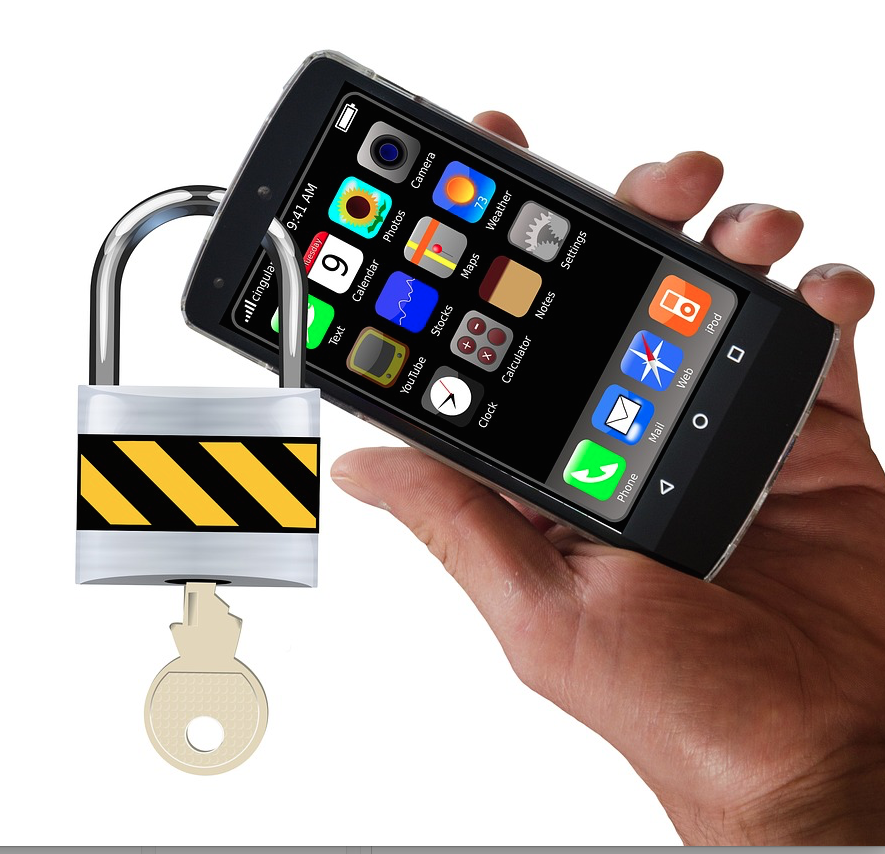
Below are some of the specific barriers listed by funeral professionals surveyed:
“Integration with existing systems and simplicity of use for older generations.”
“I do not control what is used. The people that make that decision are not comfortable with technology.”
“Some tasks are just easier to do on a desktop or ink and paper, and a mobile app would only complicate things.”
“Lack of comprehensive solutions; most are piecemeal solutions.”
The Importance of Synced Technology Systems
Survey participants were asked how important it was for their funeral home’s technology to be integrated across multiple platforms. 67 percent of respondents answered that it was very important (41%) or fairly important (26%). More than a quarter answered that it was important (18%) or slightly important (8%). Only 3 percent answered that it was not at all important to them.
Integration concerns and challenges echoed throughout the survey. Below are some of the write-in responses that specifically addressed a lack of synced technology solutions.
“No one company does it all well. Some are better than others at particular things but no one company has it all good yet.”
“Options cross over on some aspects, but not others. End up using 3 systems to accomplish something.”
“Integrating would be helpful. Currently, if we have edits to do, we have to backtrack in multiple areas.”
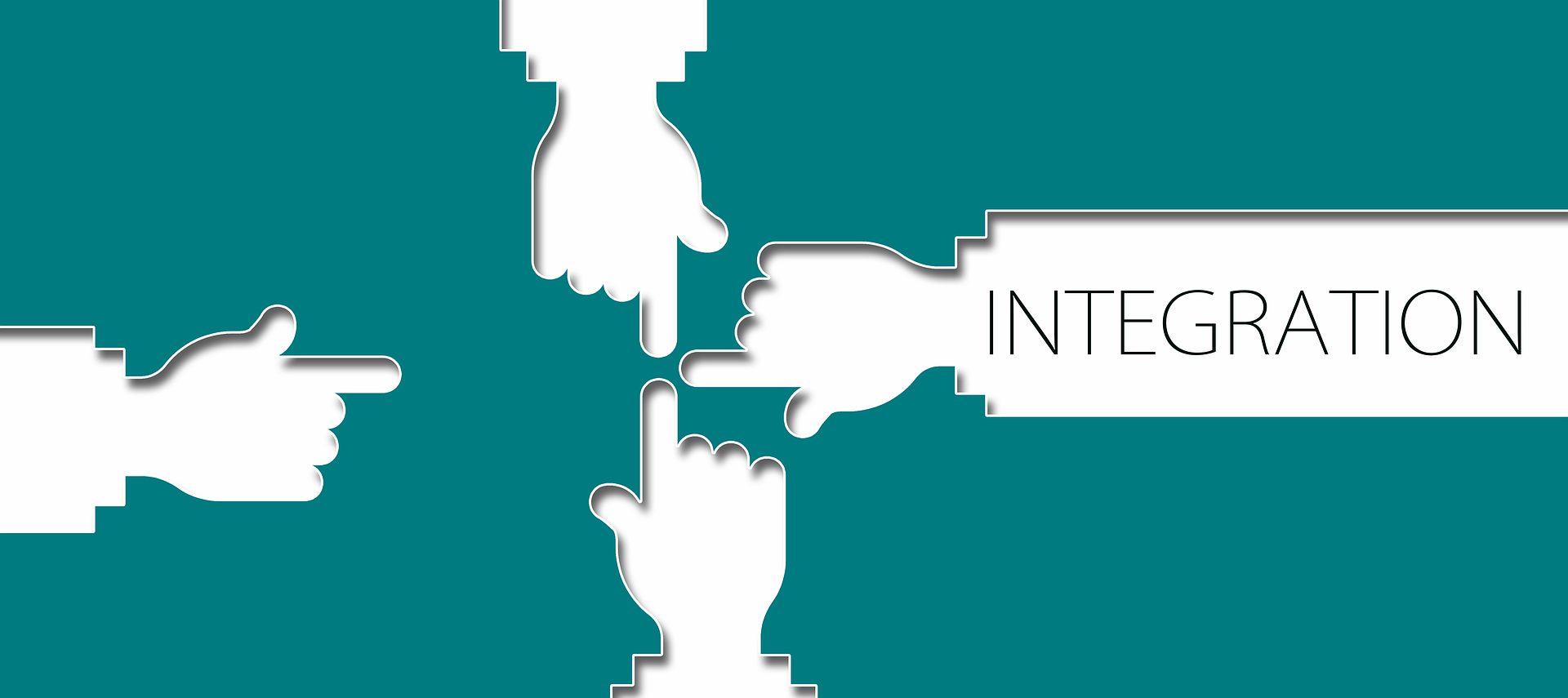
Funeral Home Scheduling
Survey participants were asked what programs or systems their funeral home uses to manage their schedule. 45 percent of those surveyed use a manual system for keeping track of the funeral home’s schedule. The calendar is updated on dry erase boards, paper calendars or other handwritten systems. 19 percent reply on a Google solution for their funeral home’s scheduling, ranging from Google Calendar, Google Sheets or Google Docs. About 14 percent answered that their funeral home had no need for a schedule due to the small staff and that anything schedule-related is communicated via word-of-mouth.
8 percent of survey respondents answered that they use Microsoft Outlook for tracking their funeral home’s schedule. About 5 percent rely on an office computer program for scheduling such as MS Excel or MS Word. 3 percent use SRS Computing to manage their schedule. The remaining 6 percent was split amongst different tech companies, including Passare (1%), CRaKN (1%), Osiris (1%) Team Up (.5%), FrontRunner Professional (0.5%) and Drop Box (0.5%)

When compared with national statistics, these survey results reveal that funeral homes are lagging behind other industries in its use of workforce scheduling automation. According to Personnel Today, 38% of enterprises are already using AI in their workplace with 62% expecting to start using it as early as this year. When it comes to workplace scheduling, 19% of companies use shift management software while 12% use free online tools, according to WorkJam’s Hiring and Scheduling Report. Statistics have proven the use of a paper-based system for employee scheduling is time consuming, inefficient and costly. Many studies have confirmed that automating processes and centralizing workplace communications can help businesses to save time and reduce errors. There are numerous online and software-based solutions for this, many of which cater specifically to funeral homes, but our survey revealed that less than a quarter of funeral homes are utilizing these solutions.
Technology Solution Recommendations
The survey asked respondents if there were any technology solutions they would recommend to other funeral directors. 207 funeral professionals provided responses. Below are the top 10 apps listed and some of the more specific answers provided by survey participants:
- ASD – Answering Service for Directors – Learn more
- SRS Computing – Learn more
- Passare – Learn more
- Tukios – Learn more
- FrontRunner Professional – Learn more
- Funeral Tech – Learn more
- Director’s Assistant – Learn more
- Google Suite – Learn more
- CRaKN – Learn more
- Consolidated Funeral Services – Learn more
“If there are many people on a team, use communication and planning technology as much as possible. Document sharing, emails, and calendar sharing are very useful on a big team.”
“TeamUp is a google simple app/website for those not wanting to be too technical/involved. Very easy to use and download to your phone/computer.”
“FuneralTech, Tukios, Disrupt Media for Facebook management, ASD for answering service, Matthews-Aurora solution center via tablet, Homesteaders online and mobile is easy to operate and beneficial.”
“CFS for our website has been fairly great to work with. The website technology is very easy to use for me, and they seem to always be updating something. I like they do so because it means they are constantly trying to make the product better.”
“Docusign, or any other easy document signing program. Google docs to keep a running/ changing schedule of services. Paperless contract systems on iPads or touch screen devices.”
“Sling has been helpful in the on-call staff for overnight transfers. Staff is able to sign up for shifts, so it is not necessary to call around for an available person when the shifts have been filled.”

Mobile App Recommendations
The survey asked respondents if there were any mobile apps they would recommend to other funeral directors. 175 funeral professionals provided responses. Below are the top 10 apps listed and some of the more specific answers provided by survey participants:
- ASD Mobile – Learn more
- SRS Mobile 9 – Learn more
- Google suite (Google Drive, Google Docs and Google Calendar) – Learn more
- Dropbox – Learn more
- Embalm Calc – Learn more
- TeamViewer – Learn more
- Passare – Learn more
- Vital ICE – Learn more
- Trello – Learn more
- Airtable – Learn more
“iCal and Apple’s messaging app helps us communicate effectively and instantly. I have an Apple Watch so I am able to keep an eye on the text stream, emails, and calendar changes even while working funerals.”
“I’ve been very happy with ASD. Their app is exactly what I wanted it to be, I also like that they can pull funeral service details directly from my website. Also the playback conversation feature is great. I’m going to say I think 85% of the message summaries are correct and not missing anything.”
“I use Microsoft OneNote to organize my thoughts and lists. YouTube is an indispensable tool to find solutions to any number of tasks and challenges.”
“Facebook Pages, Instagram, Later Marketing, Twitter, LegacyTouch, ASD, Dropbox, Google Drive, Google Voice, Canva, Pixlr.”
“Any social media apps. Free advertisement for your business.”
Kates Boylston Publications, March 2020
Are you surprised by any of the findings of ASD’s Mobile Technology survey? Leave us a comment – we’d love to hear your thoughts on our survey results!
ABOUT THE AUTHOR
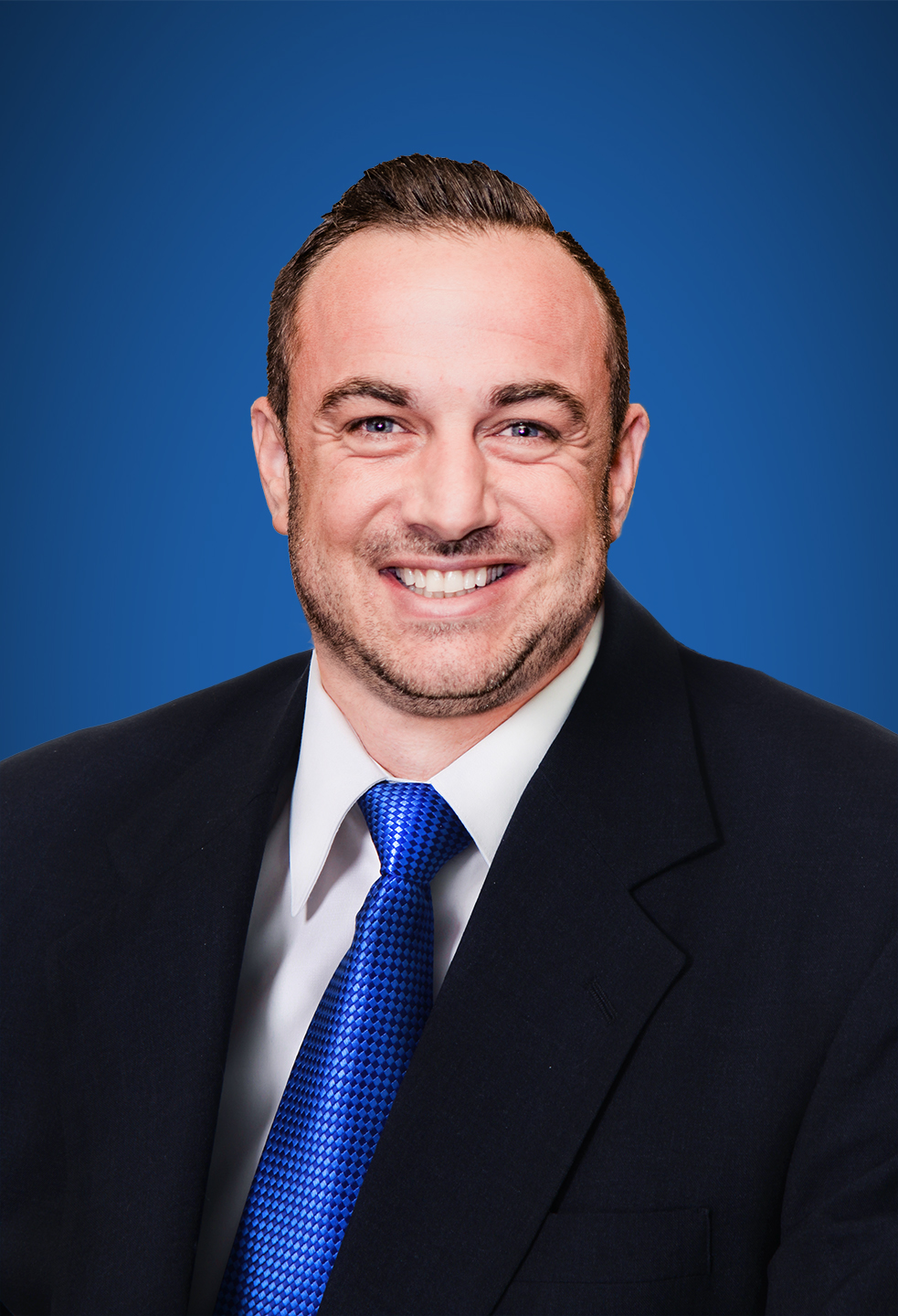
National Sales Manager, Craig Meehan, has been an integral part of the ASD team since 2016. Craig works with funeral professionals to determine how ASD can meet their funeral home’s needs. He regularly attends funeral home conferences throughout the year and enjoys speaking to directors about possible solutions to their business challenges. Craig has 15 years of experience consulting business owners on technology solutions. He was the Marketing and Customer Service Manager for Pet Food Direct (Now Chewy.com) and was a Technical Consultant for American Reprographic Company and Verizon. Craig is passionate about helping funeral professionals develop a communication and technology strategy that meets the needs of the today’s families while helping the funeral home increase productivity.
RELATED READING
ASD Shares Eye-Opening COVID-19 Death Call Data
2019 Survey Findings: Mobile Technology Trends in the Funeral Profession
Insights From ASD’s 2017 Funeral Home Marketing and Communication Survey
About The Author
Jess Farren (Fowler)
Jess Farren (Fowler) is a Public Relations Specialist and Staff Writer who has been a part of the ASD team since 2003. Jess manages ASD’s company blog and has been published in several funeral trade magazines. She has written articles on a variety of subjects including communication, business planning, technology, marketing and funeral trends. You can contact Jess directly at Jess@myASD.com
